Traits
Raptor Tail
A long tail with a frill of feathers that extends from the base to the tip. The feathers will always overlap each other, like a bird’s wings or tail feathers, and never be distanced apart. Alternatively, it may be covered in short protofeathers. It should resemble the tail of Archaeopteryx, though you can also use wiry protofeathers. The feathers attach to the bone of the tail and point outwards.
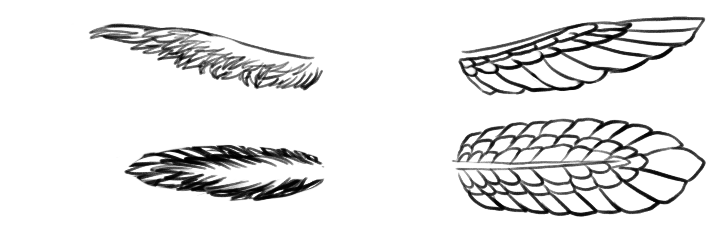
Color Rules
When presenting with full feathers, Raptor Tails may either use the normal gradient across the whole tail or use different solid colors for each layer of feathers (black primaries, white secondaries, etc. within color rules) for up to three different-colored layers. When presenting with protofeathers, it may have a gradient towards the end of the tail that lies below all other markings.
Size & Range
There is no maximum limit on tail length. However, your dragon’s tail must be long enough to be able to touch the ground. Legs will not attach to the tail. Unless a dragon has Tailless, there must be a central bony area that tapers as it reaches the end--the same as a lizard or ancient theropod.
Shape
Feathers and fur must both point towards the center area of the tail. For tails that present with full feathers, the end may have a spaded or frilled appearance that sticks out from the rest of the feathers.
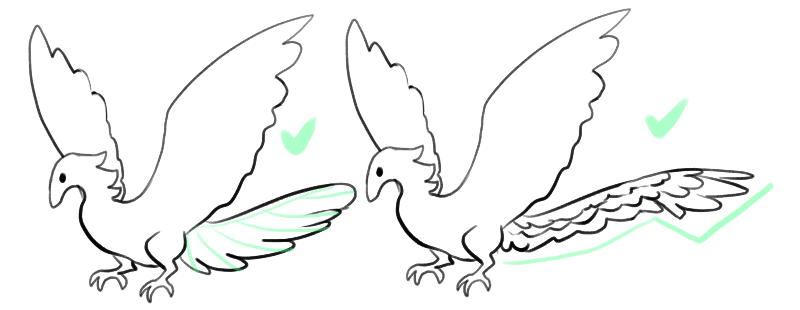
Special Interactions
- Accents (Feathered) -The end of the outer tail tips may be affected by accents. In addition, the end of the tail tip and feathers attached to it and up to three feathers attached to it may be affected by accents.
- Accents (Protofeathers) - The very end of the tail may be affected by accents.
- Transparent Skin - When presenting with full feathers, the feathers cannot be affected by Transparent Skin, but the central tail may be. When presenting as protofeathers, the fur will also be affected.
- Pollen - Pollen may appear as a gradient mark. It may optionally remove plumes and protofeathers where it touches.
- Tailless (Feathered) - In addition to completely removing the tail, you may also have plumes that attach to the base of a tail. These plumes may be tiny or long enough to touch the floor, but no longer.
- Tailless (Protofeathers) - In addition to completely removing the tail, you may give it a small, dog-like tail. The tail will still have no tufts. The protofeathers will still be short.
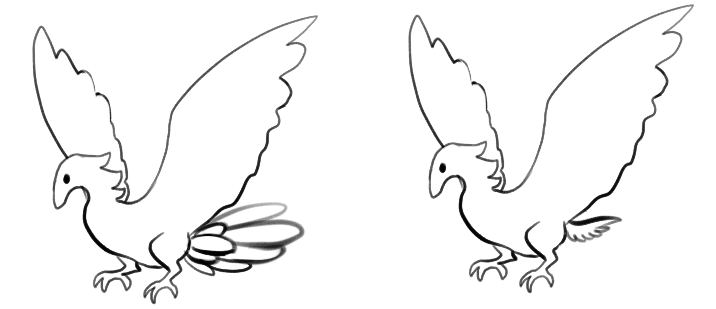
Items
- Skittertint - This allows an additional color to be used when the tail presents with a gradient.
- Scalestain - This allows stylizing of the feathers. You may have them curl or extend.
- Loremark/Tattered - This may remove up to half of the feathers. Tattered must be random, but it may damage part of the feathers rather than remove the whole feather. Loremark may trim the feathers into a shape or leave just enough feathers for a plume on the end.
- Surgical Kit - This trait may be removed with a single Surgical Kit, along with any modifiers that are exclusive to the tail.
Common Issues
Below, left: This dragon has feathers that point towards the base of the tail, rather than a central bony area. Shapes like these need at least a few lines to indicate that the tail feathers point to a central area.
Below, right: This tail presents with both protofeathers and full feathers. You can only pick one!
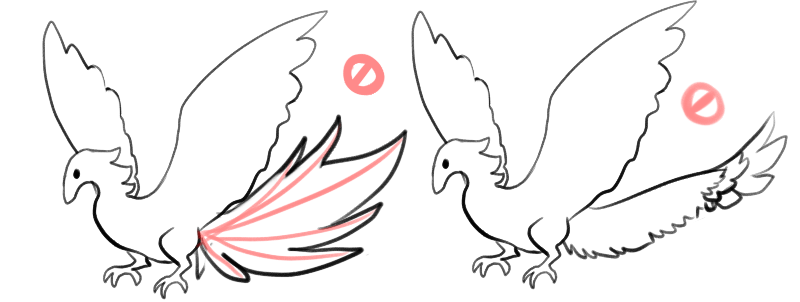
Below, left: This has a frill of feathers on the end, but not the reast of the tail. Feathers will always cover the entirety of the tail. You would need whip tail and Plumes--or similar traits--for this.
Below, right: The same applies when using protofeathers--feathers will noticeably cover the entire tail. Additionally, tails that present with protofeathers do not have a frill option for the end. You would need Heraldry or Tufted Tail for this.
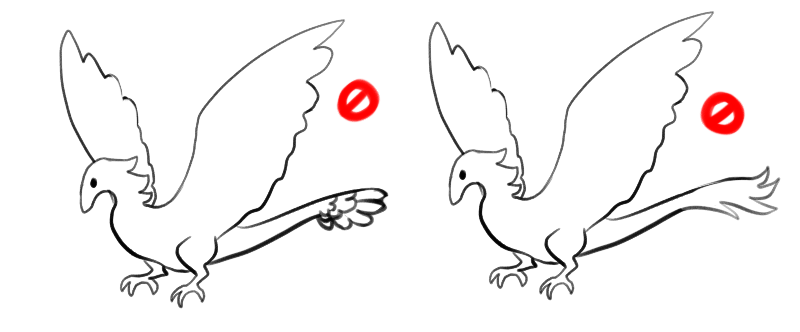
Feather and Fur Tips
The difference between feathers and fur can get very tricky with varying styles. Here is the general rule when drawing feathers. It will have the same flexibility as paper being pulled in the wind. This means paper makes for a very good reference in how feathers bend and fold. Feathers will generally move together and flow in the same direction, with the body. They will not wave in opposite directions or bend in more than one spot.
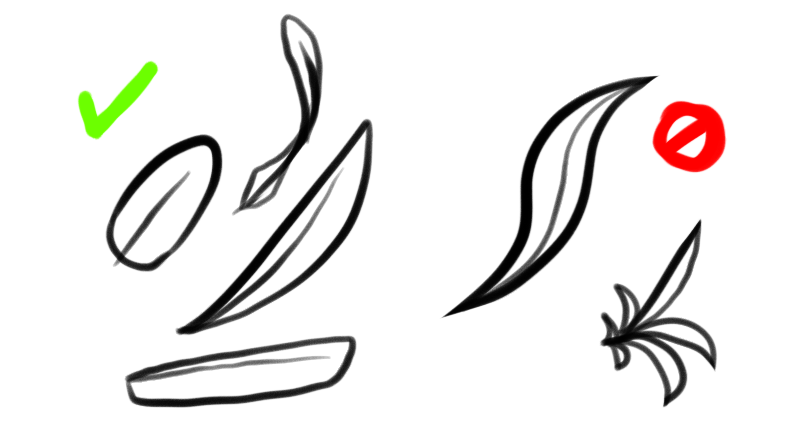
.